McGavock-Gatewood-Webb House (Fountain Blue)
Introduction
Text-to-speech Audio
The two-story, brick house behind the chain-link fence at 908 Meridian St. is the McGavock-Gatewood-Webb House, built around 1840 and enlarged in the mid-1840s and the 1870s. Also known as Fountain Blue, the home remained the property of later generations of the McGavock family until 1891 and was the Gatewood family home until 1905. The Webb family divided the house into rental apartments in the 1910s. The McGavock-Gatewood-Webb House became a National Register of Historic Places listing in 2007. The building was bought by the church across the street in 2003 but was later purchased by local developers John Rochford and Ed Cooper. There is a confirmed plan to turn the house into a craft beer bar by late 2023.
Images
Boarded-up McGavock-Gatewood-Webb House in 2013 photo (sandylwilson)
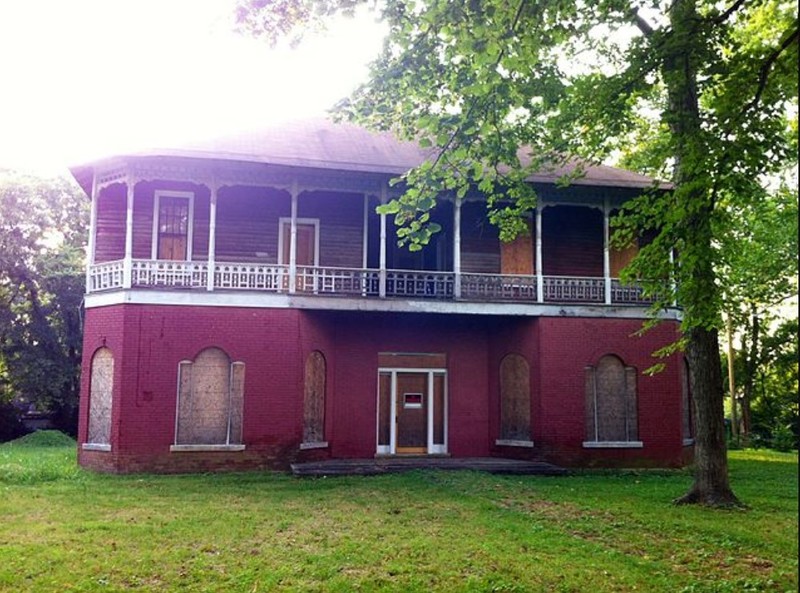
East side of Fountain Blue in 2005 (Carroll Van West for NRHP)
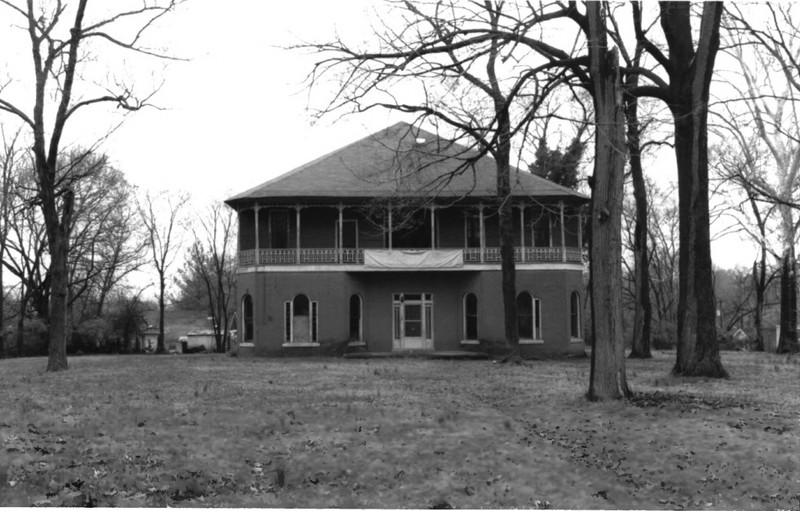
South side of Fountain Blue in 2005 (Van West)
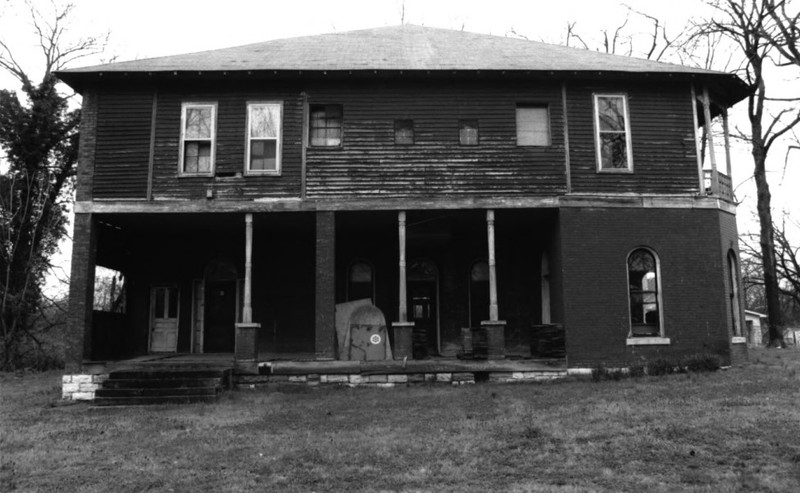
North side of Fountain Blue in 2005; older portion of house on right (Van West)
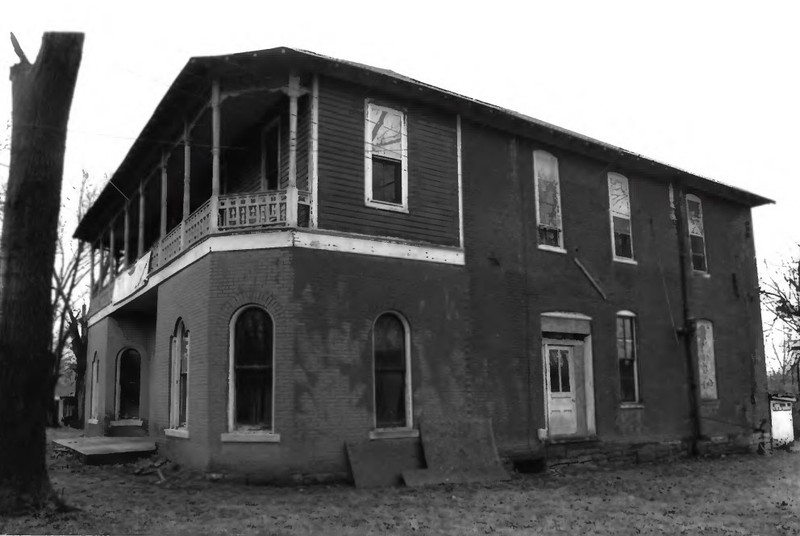
Fountain Blue (Lindsley home) on 1871 map of Davidson County (G.W. & C.B. Colton & Co.)
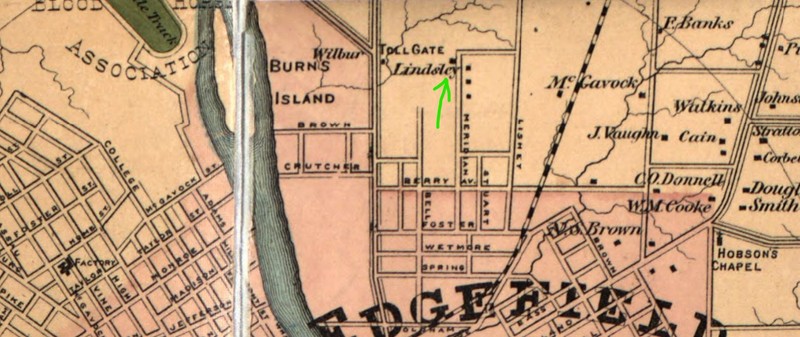
Fountain Blue (green arrow) on 1914 Sanborn map (Vol. 3 p. 87)
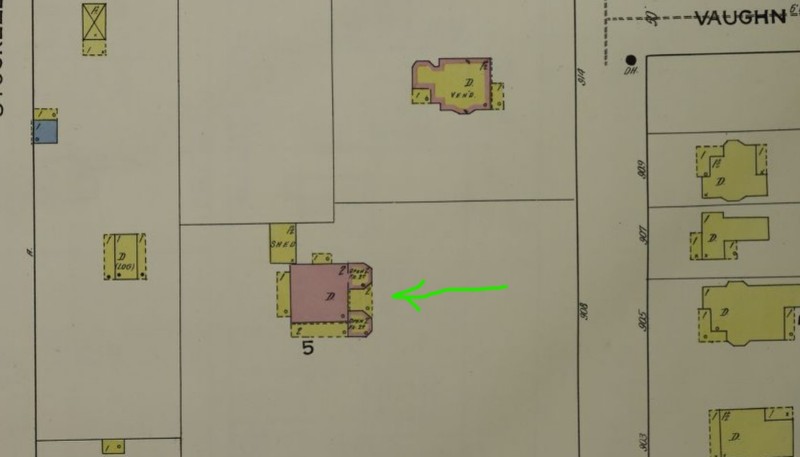
Backstory and Context
Text-to-speech Audio
James McGavock, the grandson of an Irish immigrant, was given 320 acres of land in the Nashville area by his father, David McGavock. James built a mansion on his land that he called Fountain Blue as a country home. James died around one year later, in 1841; an acquaintance, Samuel Earthman, shot and killed him due to a dispute. The property was split into four tracts for James' children; his daughter, Lucinda, inherited the mansion on 94 acres. In 1842, Lucinda married Jeremiah George Harris, local Newspaper editor of the Union. Their son, Joseph, was born in 1843. Mr. Harris wrote in 1844 to his friend, James K. Polk (the soon-to-be U.S. president), of construction taking place at Fountain Blue. The house was more than doubled i size; the prior Federal style was replaced with a more up-to-date Greek Revival style. The original portion of the mansion is seen as two-thirds of the north elevation. The two southern rooms were added at this time, on a foundation of machine-cut limestone, a new innovation of that era. The main entrance was shifted from the north to the south side. The second Harris child, Lucie, was born in 1846; Lucinda died one year later.
Fountain Blue remained unoccupied during the Civil War while Jeremiah Harris served in the Union Navy and son Joseph was a Confederate soldier in Knoxville. Daughter Lucie lived in the North during the war. Joseph died in Europe in 1865; Lucie returned to live at Fountain Blue. In 1868, she married a professor of surgery at the University of Nashville, Dr. Van Sinderin Lindsley. More work was done on Fountain Blue by the Lindsleys, including adding projecting bays and a portico on the east side and a two-story porch on the south; these changes, plus arches over some doorways, gave the house more of an Italianate style. Dr. Lindsley died in 1885 and Lucie soon started to sell off portions of the property. Lucie sold the house in 1891 to Wesley Emmett Gatewood and moved to live with an offspring in New York.
Fountain Blue was the Gatewood home from 1891 to 1905. By the 1890s, a streetcar line a block from the house connected the rapidly developing suburb to Nashville. While Alonzo C. Webb purchased Fountain Blue in 1905, he lived elsewhere in the neighborhood (309 Wilburn St.) and sold a lot on a corner of the property to the superintendent of Nashville Public Schools, Professor J.J. Keys. While building a new home on the lot, Keys and his wife lived in Fountain Blue until 1913. The house was subdivided to include multiple apartments beginning in 1915; exterior changes were made to enclose the second-floor porch and to install a modern Craftsman-style entrance facing Meridian St. Mr. Webb moved into a part of Fountain Blue in 1928 but rented out the apartments. Heirs of Mr. Webb rented out the apartments after his death in 1939. Nearby Ray of Hope Community Church bought Fountain Blue in 2003 and renovated the house to restore the pre-apartments configuration. The house became their Better Tomorrows Adult Education Center. A Birmingham, Alabama-based brewery has announced plans to convert Fountain Blue into a craft brew pub by late 2023.
Sources
Nickas, Lauren. Moore, Elizabeth, Van West, Carroll. NRHP Nomination of McGavock-Gatewood-Webb House, Nashville, Tennessee. National Register. Washington, DC. National Park Service, 2007.
Williams, William. "Historic east side building could land brewery." NashvillePost (Nashville) May 17th, 2021. online ed, Business sec.
Williams, William. "Birmingham brewery set for East Nashville." NashvillePost (Nashville) March 21st, 2022. online ed, Business sec.
https://en.wikipedia.org/wiki/McGavock-Gatewood-Webb_House#/media/File:McGavock-Gatewood-Webb_House.jpg
National Park Service (NPS): https://npgallery.nps.gov/AssetDetail/NRIS/07000688
NPS: https://npgallery.nps.gov/AssetDetail/NRIS/07000688
NPS: https://npgallery.nps.gov/AssetDetail/NRIS/07000688
Library of Congress (LOC): https://www.loc.gov/item/2006626025/
LOC: https://www.loc.gov/item/sanborn08356_007/
